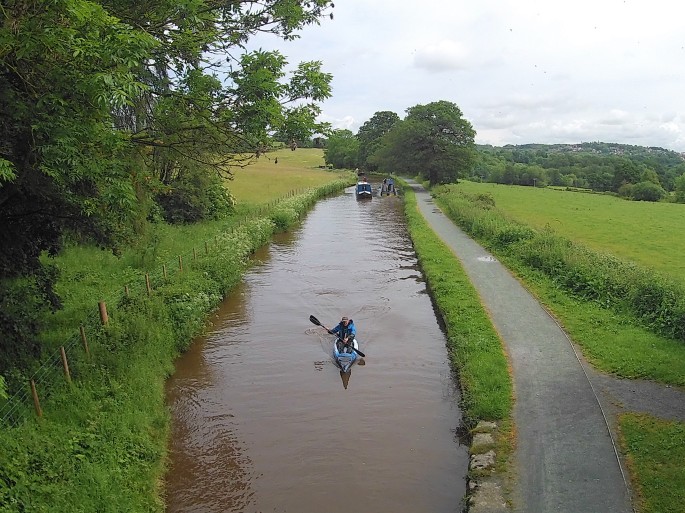Before we get to the REALLY exciting wildlife encounters here’s a selection of other stuff I have observed recently while paddling silently along.
The first was actually on the end of a fishing line. I havn’t done any kayak-fishing for a few years but my plan for later in the summer to lure some Blue Sharks within range of my Gopro meant I had to catch some mackerel for ‘bait’. My rod nearly got jerked out my hand when ten pounds of fish, consisting of two Pollack and a Cod, pounced upon the mackerel feathers simultaneously. I released the Pollack and was tempted to take the Cod home for tea, but it somehow managed to read my thoughts and with a mighty effort leaped overboard.

Next to the beautiful Avon estuary in south Devon,

where I came upon the largest brood of Shelduck I have seen this spring/summer.
Fifteen Ducklings!

I was very pleased to see that the swans which were nesting beside the upper reaches of my local estuary, the Torridge, had successfully hatched out five cygnets. It’s always better when it’s on your local ‘patch’.

Charlie L and I had a superb peregrine encounter off a particularly dramatic cliffy bit of South Devon. 
A female peregrine came labouring in off the sea carrying a large prey item, followed casually by the male bird. It landed on a small headland and as it plucked the victim the feathers drifted off downwind. We assumed the prospective meal was dead, but in a sudden flurry of wings the pigeon escaped and sprinted off around the corner, hotly pursued by the hungry falcon.

It apparently didn’t get far because the peregrine and meal (half eaten) flew past again later. Nice try though.
Looe island never disappoints because it is private and so free from wandering dogs, which can terrify wildlife. It was great to see a couple of fledgling oystercatchers dozing on the beach. They are usually very difficult to observe because on the approach of anything remotely resembling a threat, including an ageing kayaker, the parents pipe a warning call and the youngsters immediately rush into a dark corner and hide.

Oystercatcher adults are very vocal and as usual there was a lot of shouting going on:
For the first time I can recall I saw an Oystercatcher swimming in the sea. This is very unusual and I think it was probably a tactic to lure a walker away from their youngsters who were probably hunkered down on the beach where they had hatched. You can see the interloper in the video:

I was expecting to see Willis the resident Whimbrel as I paddle along the beach, but instead was very surprised to come across this Bar-tailed Godwit. A bit drab to look at but legendary amongst bird enthusiasts because of its huge migration feats, with a non-stop flight in excess of 6,800 miles being the longest recorded of any bird. Was this bird late onn its way north to arctic breeding grounds, or an early departer for the south. Who knows?

I did indeed come across Willis the Whimbrel later, similar in plumage, but not in beak, to the Godwit.

On the same reef was Eric the resident Eider. Both of these species should migrate north in the summer but have clearly decided that life at Looe is just too pleasant to desert for half the year.

As usual I was investigated by a couple of inquisitive seals, one of which looked remarkably like Nudger, a young male Grey Seal who clambered out onto my kayak deck last year. Here he is in August (ignore the date stamp which is wrong):
Today’s seal was bit darker and appeared to have different markings to Nudger, but his behaviour and apparent enjoyment of draping seaweed over his head, and swimming upside down, were identical to Nudger.

It was, as usual, great to see this creature which is very ungainly out of the water, wafting about with effortless ease.
Tremendously exciting, but this experience was eclipsed by my first ever sighting of a Beaver, not only in the UK but anywhere in the world. My ultra early start paid off, although I was hoping to see an otter.
This clip was taken just after 5am, in Southwest England!






































































